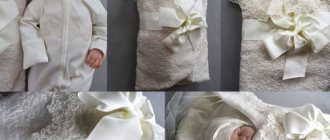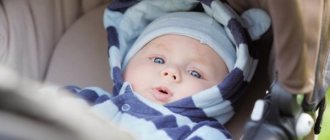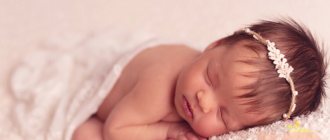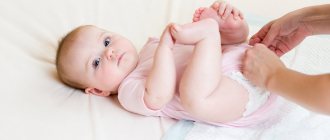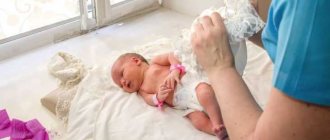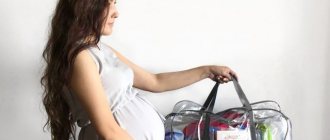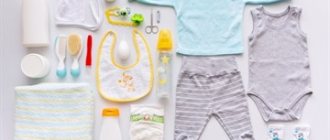There are a variety of methods to strengthen children's health - from drug therapy to dipping babies into an ice hole. What to choose? What's better? Let's try to start with the basics. To begin with, we will... do nothing special. It's difficult. Society demands fuss from parents - what are “quiet parents”? Don't they have problems? A mess. Just think: they allow the child to eat only porridge in the morning. And one potato in the evening. At least they would fry the cutlets! And they also have a child running barefoot under the window. And, you see, they are happy. Ugliness…
If a child who is normal from birth does not recover from illness, it means that he has a conflict with the environment. And there are two options for help: try to reconcile the child with the environment with the help of medications, or try to change the environment so that it suits the child. The formation and functioning of the immune system is determined primarily by external influences. All that is perfectly familiar to everyone, all that we put into the concept of “lifestyle”: food, drink, air, clothing, physical activity, rest, treatment of diseases. Parents of a child who often suffers from acute respiratory infections must, first of all, understand that it is not the child who is to blame, but the adults around him who cannot figure out the answers to questions about good and bad. It is very difficult to admit to ourselves that we are doing something wrong—we are feeding ourselves incorrectly, dressing incorrectly, resting incorrectly, and helping with illnesses incorrectly. And the saddest thing is that no one can help such parents and such a child. ( Dr. E. Komarovsky
)
From the first minutes of life, a newborn baby begins to signal its needs. Growing up, he will do his best to adapt to living conditions according to the principle of self-regulation. All children are excellent self-regulators. But their parents have already lived a fair amount of time, they have watched enough TV, read a lot on the Internet, and talked with friends. And they acquired a set of stereotypes that influence everything and everyone. These stereotypes can ruin a lot of things. The principle of non-interference in ensuring a healthy lifestyle for a child is a method that eliminates the influence of stereotypes. It implies the absence of panic and radical measures. When sick, body temperature can be lowered by 2 degrees, not 10. If a child is cold, he can wear one blouse, not a sweater with a scarf. If a child is often sick in the winter, you need to come up with a vacation that actually improves your health and does not entertain the parents. And so on.
How to dress your baby for a walk
When choosing clothes for a newborn, there are two significant problems: the baby himself cannot show whether he is comfortable or not, warm or cold, and also the fact that the toddler has not yet developed a thermoregulation mode, which means he quickly freezes and just as quickly overheats. As you understand, both the first and second options can be detrimental to the child’s health.
A baby is the same person as an adult, he can also be hot or cold
Therefore, it is worth remembering two principles for creating an outdoor wardrobe for a baby:
- the baby is the same person as you, that is, he may be uncomfortable, uncomfortable if he is dressed up like a cabbage;
- You need to dress your little one the same way you dress yourself +1 layer of clothing.
How to make the first walks with a baby easier: collection algorithm
First of all, do not turn them into a disaster or assemble an expedition for 2 months in unfavorable climate conditions. Mom’s calmness, her business-like approach to the dressing process, and the right choice of clothes are the key to ensuring that the baby will enjoy walks at any time of the year. In addition, it is important to consider the following nuances.
- Convenience is more important than aesthetics. A beautiful jumpsuit with original trim, but too thick for summer or thin for winter, will look beautiful, but it can have an unpredictable effect on the physical condition of the baby. It is better to give preference to slip-on overalls (for winter or for autumn-spring). Such a wardrobe item does not rub the back of the baby and does not hinder his movement. With it, you don’t have to worry about exposing your lower back or tummy, unlike vests and rompers.
- Streamlining the dressing process. First the adult gets dressed, and then the baby gets dressed. Otherwise, the little one may overheat, which is harmful at any time of the year, since if the child catches a draft, he will catch a cold.
If a mother uses a sling or a kangaroo, she can always control how comfortable the child is outside
- The first stage of getting ready for a walk is preparing everything you might need for a walk: napkins (dry, wet), spare diaper (thin for summer, thick for winter, autumn, spring), bottle of water (summer), spare panties (summer) .
- If your first walks occur in the winter, then a high-quality transformable fur jumpsuit would be an ideal option. It will provide both warmth and comfort. By the way, by unfastening the fasteners, you will get a good option for warm clothes with separated legs and arms. For frosty winters, a fur envelope is better suited.
- The right hats, that is, without internal seams that can put pressure on the baby’s head. For summer, a cap made of natural fabrics is enough, and for winter, you need to wear a warm hat on top of it. In windy weather, it is better to give preference to a hat-helmet: it perfectly warms and protects the baby’s ears and neck from bad weather.
This is interesting. You need to put a hat on your little one immediately before going outside.
Rules for walking with a newborn
In addition to the already noted number of “layers” of clothing and maintaining an optimal microclimate, there are several more golden rules for a healthy walk at any time of the year.
- Walk only on a full stomach. A hungry baby himself will not benefit from being in the fresh air, and his mother will be plagued by whims.
- Choose a route “in the patterned shade of trees,” that is, away from roads, noisy streets and direct sunlight.
It is better to walk away from highways and city noise
- For a winter walk or going out in bad weather (if such a need arises), mommy should take 2 pacifiers. The pacifier will save you if the baby screams. The second one is needed as a replacement if the baby suddenly drops the first one.
- Do not leave the house if it is above +30 or below -15, heavy precipitation or wind.
- In bad weather, you can replace a walk by sleeping with the window open. In this case, there should be no drafts, strong winds or an open balcony and an uncovered stroller (the last warning concerns safety issues).
- It is better to postpone the walk if the child has a fever. And also, you should not take a baby out into the street who is screaming for no reason, turning pale or blushing until the reasons for such unusual behavior are clarified. A pediatrician will help you understand the situation.
What to do if your child is cold
A child may freeze in winter not so much because of the cold weather, but because his clothes do not match the current temperature conditions.
In cold weather, the child should wear 4 layers of clothing. If the child cannot move, he will quickly freeze. If your newborn's shoes are wet or his feet are frozen, he may be at risk of hypothermia. Thermal overalls are not suitable for infants - this clothing is only for those children who move actively. For infants, it is better to choose down jackets or overalls based on sheepskin or holofiber.
If your child is very cold, go to any warm place - for example, a cafe. Warm the baby's hands and feet with your breath, wrap the baby in clothes, and hug him.
At home, immerse your baby in a warm bath, gradually increasing the temperature of the water. After the bath, give your child sweet tea and prepare him something nourishing so that he can quickly regain his strength.
Grandmothers used to say that a baby's hypothermia is revealed by his nose - if it is cold, it means the child is frozen. However, this method is not correct. If the baby inhales air through his nose, then it will definitely be cold. If the baby is actively moving and jumping, his hands and body are warm, then in this case you don’t have to worry about the child becoming hypothermic.
How to properly dress a newborn in winter
Pediatricians agree that you should go out for a walk with a child born in winter no earlier than 2 weeks of age.
This is interesting. All recommendations apply to full-term children born without pathologies. If there are some deviations, then the pediatrician should draw up a schedule of walks and give advice on choosing clothes.
Necessary set of clothes for an infant
If a toddler is a winter kid, this does not mean at all that to keep warm he needs more clothing than his summer or spring “colleague.” Children grow very quickly, there is no need to buy something that will remain unworn.
We can say that the most important wardrobe item for a “winter” baby will be a warm transformable sheepskin jumpsuit
You will need:
- 3–4 knitted vests with sleeves;
- 2–3 flannel vests;
- 4–5 flannel rompers;
- 2–3 knitted overalls-slips with buttons along the entire length;
- 3–4 light vests;
- 3–4 light sliders
- 3–4 flannelette vests;
- 3–4 flannelette sliders;
- 4 pairs of socks (knitted and terry);
- 3 thin caps;
- 3 flannelette hats;
- 1 warm hat for walking;
- warm overalls;
- 2–3 knitted overalls;
- a warm blanket (preferably wool);
- warm envelope (preferably sheepskin);
- 8 diapers (4 cotton and 4 flannelette).
Choosing a winter wardrobe
Clothes for toddlers should be made of cotton so that the skin in socks or a light first hat can breathe, and all fillings (in overalls, hats) should be chosen from heat-resistant materials.
In winter you can’t do without a warm blanket for the stroller
Clothes for babies should be easy to unfasten and fasten, it is better if they have a zipper or studs. Things should be easy to care for and not fade. A style with a wide neck (overalls) is popular.
How to dress your baby for a walk in winter
Usually, at temperatures below -10, a child is dressed in 3 layers of clothing.
- Diaper, knitted romper and vest, warm socks, knitted cap.
- Fleece sleepsuit with closed legs and arms. An alternative for this layer is flannel pants and a vest.
- Winter overalls (sheepskin) with closed legs and arms, a warm hat (a helmet that covers the ears well is very comfortable) and a scarf.
A scarf is required if the overalls neckline is too open. Cover the dressed baby with a woolen blanket.
When choosing a jumpsuit or envelope with insulation for the winter, pay attention to the amount of insulation (at least 250 grams)
Please note that diapers can be used instead of warm overalls. The order of swaddling will be as follows: a thin diaper, a flannelette, a warm blanket or blanket, and then a fur envelope with ties around the face.
This is interesting. Multilayer clothing on the baby leads to the fact that his head is slightly lower than the level of the body, so it is recommended to place a thin flat pillow under the baby’s head while walking.
At temperatures from 0 to -10, in the second layer we replace knitted items with cotton ones. If the weather is sunny, then the fleece slip can be replaced with a cotton one.
At temperatures from 0 and above, we make the first and second layers from cotton items, we refuse a woolen blanket and a warm blanket under a fur envelope.
How to dress a baby outside in winter - video
Features of the first walk with a winter baby
The first time outside is important for both mother and baby. It is very important that such an experience does not harm the health of the baby. Therefore, it is recommended to limit the first walk to 5 minutes (if the temperature is about 0 degrees, then 10 minutes). Then add 5 minutes daily (if the temperature is about -10) or 10 (if the temperature is about 0 degrees). But if the readings are below -10, it is better to postpone the first foray into fresh air until it rises to at least -10.
And another important point: for the first time you can carry the baby in your arms, and not in a stroller. Close contact with his mother will calm him down and give him a positive emotional charge.
Hats and scarves, mittens and socks
A hat, scarf, mittens, socks are important winter accessories. What should a newborn wear in winter, besides outerwear?
A warm winter hat for a baby must have ties. Due to the use of lacing, the headdress fits tightly to the head and prevents the wind from overcooling the baby. In addition, secure ties will not allow the baby to throw the hat off her head. The hat must be exactly the right size; it should not be small or large. Ideally, the headdress should cover the baby's ears, forehead and neck. The outer winter hat should be made of wool or fur. A thin cotton cap should be worn under such a product to avoid allergic reactions.
Sometimes you can do without a scarf. However, the ideal situation is when the product reliably protects the baby’s neck from drafts. The scarf can be made of wool or fleece.
Socks for newborns are necessary, even if the feet are covered in a warm envelope. Fleece or wool items are best.
Mittens will prevent the baby from hypothermia and the child causing involuntary scratches to himself. Winter mittens are usually made of wool or fleece.
Doctor Komarovsky's opinion
Experienced pediatrician Evgeniy Olegovich Komarovsky urges not to confuse the concepts of “walking” and “being in the fresh air” when it comes to newborns.
It usually doesn’t matter to a newborn whether he or she will ride in a stroller or just spend time outdoors.
So, Dr. Komarovsky advises using... a balcony for your first walks. This significantly saves the young mother’s time, because while the baby is “ventilating”, she can prepare food and clean the house. And there are also no difficulties with pulling the stroller out and in, no one coughs/sneezes on the baby, and dirt from under the wheels does not fly onto him.
So outings with a stroller can only be timed for situations when there is no one to leave the little one with, but you need to go out on business (for example, to the grocery store). As for the walking regime, on the 10th day of life you can go for a walk on the balcony for 15–20 minutes. The next day - 30 minutes 2 times a day. And so, by the age of one month, the child can spend the whole day in the fresh air. The routine will be like this: wake up, eat, go for a walk, take it in, eat, go for a walk again. At the same time, Komarovsky draws attention to the fact that negative temperatures are not a reason to refuse a walk.
With normal clothing and protection of the child from the wind, a healthy baby feels quite well even at sub-zero temperatures. Here’s a rule that’s easy to remember: for every month of life, minus 5 degrees, but not lower than 15.
E. O. Komarovsky
https://articles.komarovskiy.net/gulyaem.html
When it comes to clothing, Evgeniy Olegovich urges, if possible, to refuse “extra padded jackets.” Metabolic processes are accompanied by the production of heat, and in a baby these processes are much more intense, unlike in an adult. So if you are cool, then the baby is fine, if you are normal, the little one is warm, but when the parent is warm, the baby is already hot. So look at the baby’s reaction: if you brought in “boiled cancer,” then take into account your mistakes and draw conclusions. By the way, Komarovsky notes that the doctor has not yet met parents who dressed their child in such a way that the little one was cold.
Dressing the baby for a walk in the spring
Spring is the time of awakening of nature after winter, the first warm sunny days, but sometimes rainy and windy. These weather conditions determine the peculiarities of choosing a newborn’s wardrobe, and also determine the rules for outfitting a little toddler for a walk.
In late spring you need to make allowances for the fact that the weather is usually sunny
Spring wardrobe
The main items of a spring set of things for a baby:
- several flannel diapers (2 of them are used as bedding on the bottom of the stroller box);
- an envelope made of fleece or synthetic padding (a wool blanket can be an alternative);
- terry overalls;
- 2-3 bodysuits with short and long sleeves with a fastener for changing a diaper;
- 3–4 knitted rompers;
- 3–4 flannelette sliders;
- cotton slip;
- 3–4 knitted vests;
- 3–4 cotton vests;
- 2-3 flannelette blouses with buttons;
- 3–4 cotton T-shirts;
- 2–3 thin hats (knitted and flannelette);
- 2 cotton caps;
- wool cap;
- 3–4 pairs of thin and terry socks;
- 2 “anti-scratch pads”.
An important criterion for choosing clothes for a baby is the material from which it is made. In March or April, when the weather outside literally changes from “almost summer” to “winter is back” within an hour, it is very important that the fabric absorbs moisture if the little one sweats.
How to dress a baby in spring depending on air temperature - table
| From 0 to -5 | From +1 to +5 C | Up to +10 C | Up to +15 C | Up to +18 C | |
| Diaper | + | + | + | + | + |
| Bodysuit or slip (cotton or flannel) | + | + | + | + | |
| Fleece sweatshirt or hoodie | + | + | |||
| Fleece rompers | + | + | |||
| Cotton overalls | + | + | + | + | |
| Fleece overalls | + | + | + | + | |
| Cotton cap | + | + | + | + | + |
| Thin woolen hat | + | + | + | + | |
| Wool hat | + | + | + | ||
| Cotton socks | + | + | + | + | + |
| Terry socks | + | + | + |
To understand whether your baby is comfortable outside in the spring, you need to try his neck and back. If they are hot, it is recommended to unwrap the baby a little. If they are wet, then it is better to end the walk and return home so that the child does not get wet.
How to dress a baby outside in the spring - video
Dressing a child in the fall
The list of clothes for an autumn toddler will, in principle, be similar to the spring one. But some differences are still worth noting.
When choosing a set for a walk, you need to take into account that in the fall it can start raining or the wind can pick up at any moment
Autumn wardrobe
Autumn weather is also quite changeable, but most often in the direction of cooling. Basic things should be:
- 3–4 flannelette diapers;
- 3–4 flannelette vests;
- 3–4 flannelette sliders;
- 3–4 knitted rompers;
- 2–3 knitted hats;
- 2–3 cotton caps;
- 3–4 knitted T-shirts;
- 4–5 knitted bodysuits;
- 2–3 pairs of terry socks;
- 2–3 pairs of knitted socks;
- overalls made of fleece or synthetic padding;
- overalls with insulation (velor with insulation);
- an envelope on sheepskin (so that the first frosts do not take you by surprise);
- wool cap
- hat made of fine wool.
A woolen blanket should also be prepared for walks.
How to dress a baby at different autumn temperatures - table
| +2 — +8 | +8 — +12 | -5 — +5 |
| Cotton overalls | + | + |
| Fleece overalls | + | + |
| Insulated overalls | + | + |
| Cap | + | + |
| Fine wool hat | + | + |
| Knitted bodysuit | + | |
| Overalls with padding polyester | + | |
| Wool cap | + | + |
| Knitted hat | + | |
| Terry socks | + | + |
| Knitted socks | + | + |
How to dress a baby on the street (from 0 to +5) - video
How to dress a baby on the street (from 10 to +15) - video
Dressing your baby for a summer walk
The principle of outfitting a baby in summer is to prevent him from overheating. The set of clothes for hot weather is also quite extensive, no matter how strange it may seem, because in theory, if it’s +25 outside, what else is needed except a vest and a diaper.
If you are dressing your baby in a vest, it is better if it has sleeves so that the little one does not stick his hands to the diaper and does not get nervous because of this
Nevertheless, the wardrobe should include things not only for a morning walk, when it is hot, but also for an evening walk, when it can be cool.
- 2–3 cotton diapers (used to cover the bottom of the stroller box and as a sun canopy);
- 1–2 flannelette diapers (to put on the bottom of the box on a cool evening and cover the baby);
- 2-3 knitted blouses (in case of cool weather);
- 2–3 cotton suits;
- 1–2 knitted suits;
- 4–5 cotton vests;
- 2–3 cotton rompers;
- 2–3 cotton bodysuits;
- 1–2 thin shorts;
- 4–5 cotton caps;
- 3–4 thin caps;
- 3–4 pairs of cotton socks;
- 1-2 pairs of terry socks.
To the question of how to dress a baby for a walk in the summer, there are two answers: one is just a diaper and a thin diaper in case of a sudden wind, and the second is a cotton vest, thin socks or a thin T-shirt and shorts. Only mommy makes a clear choice, comparing both approaches if desired. Please note that at temperatures above 30 degrees it is better not to go outside.
How to dress a baby outside in the summer - video
First winter walk: what to wear in the cold season
Since a newborn's first walk in winter should not exceed 10-15 minutes, there is a misconception about the relative lightness of clothing. Some young mothers think that in such a short period of time the child will not have time to either freeze or sweat. However, it is not. An unhardened child's body is especially at risk of catching a cold. Therefore, the baby should be dressed for the first walk, as for all subsequent ones. The kit should include insulated suits, booties, hats, outer overalls and an envelope. By remembering how to properly dress a newborn in winter, you can avoid a lot of trouble.
